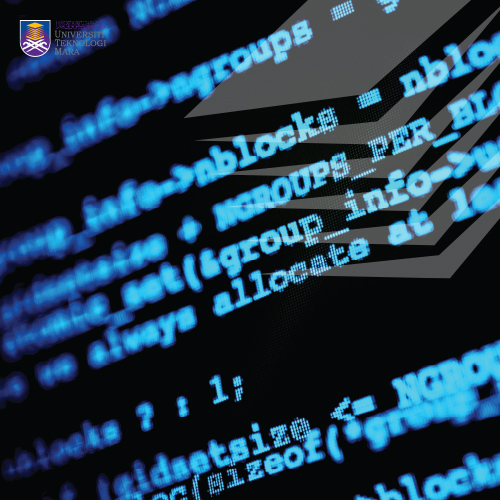Course Syllabus
Introduction to the Field of Organizational Behavior
1.1 The Field of Organizational Behavior.
1.2 Perspective of Organizational Behavior.
1.3 Contemporary Challenges of Organizational Behavior.
Individual Behavior and Processes
2.1 The MARS Model of Individual Behavior and Performance.
2.2 Types of Individual Behavior.
2.3 Personality in Organizations.
2.4 Values in the Workplace.
2.5 Values Across Cultures.
Perceiving Ourselves and Others in Organizations
3.1 Self Concepts and How We Perceive Ourselves.
3.2 Perceiving the World Around Us.
4.3 Specific Perceptual Process and Problems.
4.4 Improving Perceptions.
4.5 Global Mindset.
Workplace Emotions, Attitudes and Stress
4.1 Emotions in the Workplace.
4.2 Emotional Labor and Intelligence.
4.3 Job Satisfaction.
4.4 Organizational Commitment.
4.5 Work Related Stress and Its Management
Foundations of Employee Motivation
5.1 Employee Engagement.
5.2 Employee Drives and Needs.
5.3 Maslow's Needs Hierarchy Theory.
5.4 Learned Needs Theory.
5.5 Four Drive Theory.
5.6 Expectancy Theory of Motivation.
5.7 Organizational Behavior Modification and Social Cognitive Theory Learning.
5.8 Goal Setting.
5.9 Organizational Justice.
5.10 Equity Theory.
Teams Dynamics
6.1 Teams and Informal Groups.
6.2 Advantages and Disadvantages of Teams.
6.3 A Model of Team Effectiveness.
6.4 Team Design Elements.
6.5 Team Processes.
6.6 Types of Teams.
6.7 Self Directed Teams.
6.8 Multicultural Teams.
6.9 Virtual Teams.
Communications in Teams and Organizations
7.1 The Importance of Communication and Its Process and Channels.
7.2 Communication Barriers.
7.3 Improving Interpersonal and Workplace Communication.
Power and Influence in the Workplace
8.1 The meaning of Power.
8.2 Sources and Power in Organizations.
8.3 Contingencies of Power.
8.4 Influences in the Workplace.
Conflict and Negotiation in the Workplace
9.1 Is Conflict Good or Bad.
9.2 Conflict Process Model.
9.3 Sources of Conflict.
9.4 Individual Differences in Conflict Resolution.
9.5 Negotiation.
9.6 Organizational Approaches to Conflict Management.
Leadership in Organizational Settings
10.1 What is Leadership?
10.2 Competency Perspective of Leadership.
10.3 Contingency Perspective of Leadership.
10.4 Transformational Perspective of Leadership.
10.5 Implicit Leadership Perspective.
Organizational Culture and Creativity
11.1 Organizational Culture, Profile Dimensions and Characteristices and Organizational Culture Artefacts.
11.2 The Importance of Organizational Culture and Organizational Socialization.
11.3 Changing and Strengthening Organizational Culture and Organizational Socialization.
11.4 Creativity.
Organizational Change
12.1 Lewin's Force Field Analysis Model.
12.2 Understanding Resistance to Change.
12.3 Unfreezing, Changing and Refreezing.
12.4 Reducing the Restraining Forces
12.5 Approaches to Organizational Change.
1.1 The Field of Organizational Behavior.
1.2 Perspective of Organizational Behavior.
1.3 Contemporary Challenges of Organizational Behavior.
Individual Behavior and Processes
2.1 The MARS Model of Individual Behavior and Performance.
2.2 Types of Individual Behavior.
2.3 Personality in Organizations.
2.4 Values in the Workplace.
2.5 Values Across Cultures.
Perceiving Ourselves and Others in Organizations
3.1 Self Concepts and How We Perceive Ourselves.
3.2 Perceiving the World Around Us.
4.3 Specific Perceptual Process and Problems.
4.4 Improving Perceptions.
4.5 Global Mindset.
Workplace Emotions, Attitudes and Stress
4.1 Emotions in the Workplace.
4.2 Emotional Labor and Intelligence.
4.3 Job Satisfaction.
4.4 Organizational Commitment.
4.5 Work Related Stress and Its Management
Foundations of Employee Motivation
5.1 Employee Engagement.
5.2 Employee Drives and Needs.
5.3 Maslow's Needs Hierarchy Theory.
5.4 Learned Needs Theory.
5.5 Four Drive Theory.
5.6 Expectancy Theory of Motivation.
5.7 Organizational Behavior Modification and Social Cognitive Theory Learning.
5.8 Goal Setting.
5.9 Organizational Justice.
5.10 Equity Theory.
Teams Dynamics
6.1 Teams and Informal Groups.
6.2 Advantages and Disadvantages of Teams.
6.3 A Model of Team Effectiveness.
6.4 Team Design Elements.
6.5 Team Processes.
6.6 Types of Teams.
6.7 Self Directed Teams.
6.8 Multicultural Teams.
6.9 Virtual Teams.
Communications in Teams and Organizations
7.1 The Importance of Communication and Its Process and Channels.
7.2 Communication Barriers.
7.3 Improving Interpersonal and Workplace Communication.
Power and Influence in the Workplace
8.1 The meaning of Power.
8.2 Sources and Power in Organizations.
8.3 Contingencies of Power.
8.4 Influences in the Workplace.
Conflict and Negotiation in the Workplace
9.1 Is Conflict Good or Bad.
9.2 Conflict Process Model.
9.3 Sources of Conflict.
9.4 Individual Differences in Conflict Resolution.
9.5 Negotiation.
9.6 Organizational Approaches to Conflict Management.
Leadership in Organizational Settings
10.1 What is Leadership?
10.2 Competency Perspective of Leadership.
10.3 Contingency Perspective of Leadership.
10.4 Transformational Perspective of Leadership.
10.5 Implicit Leadership Perspective.
Organizational Culture and Creativity
11.1 Organizational Culture, Profile Dimensions and Characteristices and Organizational Culture Artefacts.
11.2 The Importance of Organizational Culture and Organizational Socialization.
11.3 Changing and Strengthening Organizational Culture and Organizational Socialization.
11.4 Creativity.
Organizational Change
12.1 Lewin's Force Field Analysis Model.
12.2 Understanding Resistance to Change.
12.3 Unfreezing, Changing and Refreezing.
12.4 Reducing the Restraining Forces
12.5 Approaches to Organizational Change.
Frequently Asked Questions
Q1 : What is Organizational Behavior?
A1 : The study of what people think, feel and do in and around organizations.
A1 : The study of what people think, feel and do in and around organizations.






